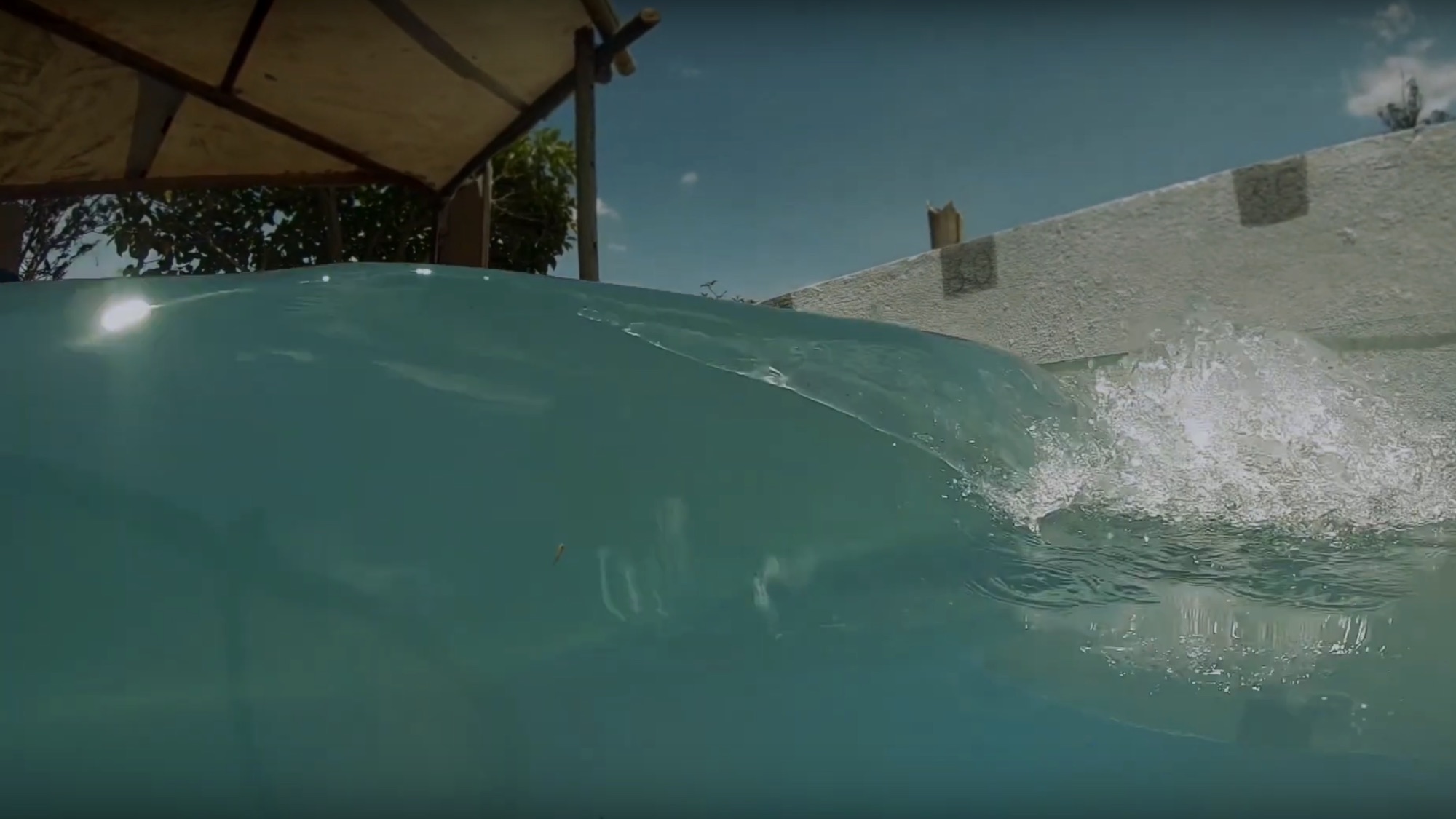How Ecaudor’s Olas wave pool system works

Olas uses a stacking module system similar to Cove wave-generation with differences on the patent-level of things. Powered by what they call their Wave-Master system, it has no compressed-air, hydraulics or pneumatics. The first waves for this system began in 2009 when a British physicist named John Baxendale unveiled his new wave-making system through a “Search for the Perfect Wave” video series. Baxendale experimented as time allowed and in 2014 patented the system. Then in 2018 South American surfer/entrepreneur, Diego Andres Cornejo Rodriquez purchased the intellectual property to create the Olas company.
Current wave frequency is one wave every 12 seconds with the capability to ratchet that up to one wave every nine seconds once they finish their chop mitigation system research. Rides at the planned Quito surf park will hit the two-meter mark and average 16 seconds duration according to Rodriquez. The design will deliver rights, lefts or both at the same time and the company claims that the cost of their wave park would be much less than what is on the market at the moment.
The modular tech can be sequenced with software (similar to Wavegarden and others) will work in a variety of pool configurations and doesn’t require a specific pool shape. “We can actually adapt to different shapes and it can be a triangle, a rectangle, a diamond, or even a circle with 4 split peaks just like Surf Lakes but in a different structure configuration,” says the company. They added that their tech also fits smaller pools for only rights or only lefts using just a few modules. Olas plans to open a surf park in Quito, Ecuador in the next few years.
Related Coverage
